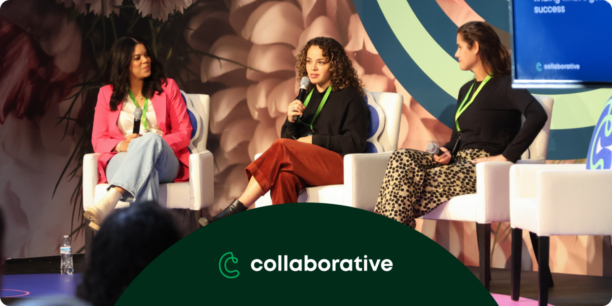How to Foster Creativity and Innovation at Your Organization

The most forward-thinking organizations don’t stumble upon innovative ideas by chance. They build a framework within their teams that supports consistent creativity and innovation.
Whether you’re a social impact organization or a for-profit company, there are ways you can engrain brilliant thinking into your culture. To help you build a space for creativity and innovation at your organization, below are two examples and key takeaways that any business can implement.
2 Organizations That Foster Creativity and Innovation
PCI (Project Concern International)
PCI aims to end hunger and improve the lives of those facing hardship. Through causes like women’s empowerment, poverty solutions, and disaster relief, they bring health and hope to millions of children and families around the world.
In 2016, PCI was named a Classy Awards Winner and recognized alongside nine other social impact organizations as one of the most innovative problem-solvers of our generation. When we sat down to speak with Chris Bessenecker, their VP of strategic initiatives, we discovered that creativity and innovation don’t just “happen” at PCI—they’re built into the organization’s strategic model.
He says,
“About four years ago—as PCI was growing—we were dealing with the dilemma of, how do you grow and stay agile? How do you maintain both the creativity that is inherent to the organization, and the ability to move fast and make decisions? As I researched, the solution that kept coming up was intentionally hardwiring innovation into your structure and building that culture.”
That’s why they created PCInnovAtion, an internal process that allows any staff member to submit an idea, have it vetted, receive support and guidance, and move forward from idea to prototype. To date, the organization has created over 100 innovations through this process.
It’s a decentralized process, so it’s going on all around the PCI globe and we’re all using the same definition of innovation. We’ve defined how to measure it, which allows you to innovate in the area of field impact, but also in process. So if I’m working at the front desk and want to innovate a process, there is space for me to do that.
By defining creativity and innovation within their organization, PCI makes ingenuity tangible and accessible to all employees and enables them to measure ideas against specific standards. Specifically, submitted ideas have to meet at least two of the following criteria to be considered innovative:
- Make a current process obsolete
- Improve value by a minimum of 50 percent (value could be increased impact, improved efficiency, or reduced time or cost)
- Be a unique product that’s highly valued by PCI’s beneficiaries, donors, or employees
“This definition provides a universal lens through which we can look at innovation. It’s flexible enough that you could apply it to a process within a unit, or it can be a global breakthrough. It’s also flexible enough to allow anyone within their position to apply, but it also ensures there is rigor.
In addition to PCInnovAtion, the organization also implements a “15% Time Policy,” which allows every staff member to use up to 15 percent of their time to come up with innovative ideas.
“It’s about building a lot of mechanisms to support innovations, and organizational leadership is critical in that process. PCI has deemed innovation to be a top priority. It’s part of our strategic plan. It’s what we want to be the best at, and the organization is investing in that seriously.”
Change.org
Another organization that builds creativity and innovation into its business structure is Change.org. This online petition platform empowers more than 100 million people around the world to start campaigns, rally supporters, and work with decision-makers to drive change in their communities.
Founder and CEO Ben Rattray advises that in order to craft a space for creativity and innovation, organizations should form specific, dedicated teams that are cordoned off to work on new initiatives—he calls them “ring-fenced” projects—who have the freedom to move rapidly and execute against new goals.
“Instead of worrying about the tentacles of legacy programs of an organization, [these teams should] instead think of themselves as a new organization, entirely autonomous to try their best in serving that new social problem they are addressing.
With this very approach Change.org recently built a 12-person team to spearhead a new, innovative initiative from scratch to address a specific problem. Rattray says, “We are going to take these 12 people, set them aside, and let them loose on this problem and give them full reign, without concern about revenue generation or funding, to execute on this problem for the next 12 months.”
This type of team management models the “intrapreneurship” system adopted by many companies, which empowers individuals within an organization to adopt an entrepreneurial mindset and invent and implement new projects. Without distraction, these intrapreneurs and teams can push the envelope for their organizations with full creative force.
Takeaways to Foster Creativity and Innovation in Organizations
Below are a few ways your organization can similarly make a space for creativity and innovation.
Create an environment that enables
It’s up to your organizational leadership to foster a culture that encourages people to think outside of the box and to go above and beyond their day-to-day tasks. Mechanisms like PCI’s 15% Time Policy—similar to Google’s “20% Time”—can motivate people to innovate in ways that align with your organizational goals.
Ask for ideas
If you want to support creativity and innovation, ask your staff to pitch their ideas. You might also create an internal process to submit them. Ask staff to each pitch an idea within a designated timeframe, and provide incentives to get people thinking.
Define innovation for your organization
As you collect ideas and build innovation into your strategic plan, it’s important that you have specific criteria set to help measure ideas and success. This will also help you communicate your innovation goals and culture to your team.
Provide guidance
Anyone can come up with an idea, but not everyone has the skills or know-how to see it through. You might appoint leaders or champions of your innovation process who can encourage, support, and advise other teammates who pitch ideas.
Give employees the freedom to create
If feasible, form teams dedicated to creating and executing new solutions. Give them the autonomy needed to successfully complete these projects.
To encourage creativity and innovation within your organization, you need to create the framework that draws out the ingenuity residing in your staff. Let them know that their creativity is an organizational priority.
Have any other suggestions that help foster creativity and innovation in organizations? Let us know in the comments below.

A Leader’s Guide to Motivating Employees


